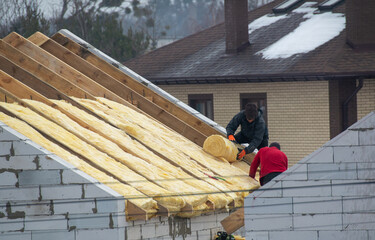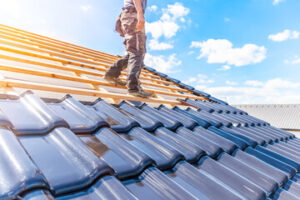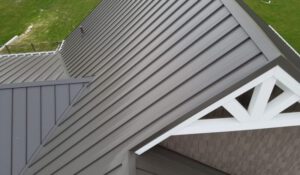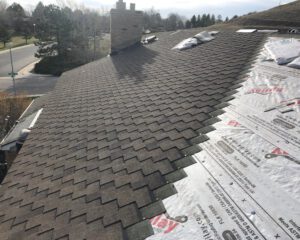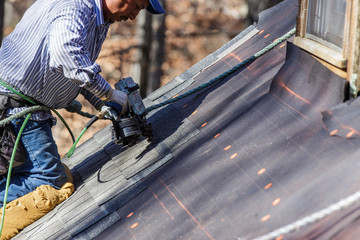Getting proper roof insulation is one of the best things you can do for your home. It can help you avoid energy loss as heat rises during the winter and keep cooled air from escaping during the summer.
Insulation is available in blanket and reflective forms and comes in a variety of materials, including natural and synthetic fibers, glass wool rock and slag wool, fiberglass, sleek foils, and rigid foam boards. Its optimal R-value depends on your climate. When in doubt, hire a professional Roofing Companies in Allen TX.
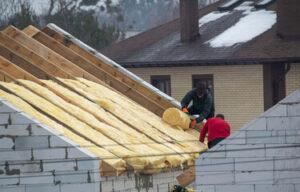
Insulation Increases Energy Efficiency
Imagine sitting in your home on a hot summer day and not having to crank up the air conditioning as high as it can go. That’s possible with insulation that works. Well-installed insulation reduces heat penetration into a building, lessening the workload of heating and cooling systems and significantly lowering energy consumption and related utility expenses.
The simplest way to increase your energy efficiency is by installing new roof insulation, but it’s important to know what type of insulation will best work for you. Spray foam insulation is a good choice because it creates a tight seal around leaks and cracks, and prevents pests and mold from entering your home. It also reduces the transfer of unwanted noise from outside to inside.
Blown-in insulation is another option. It’s easy to install and offers a wide range of benefits, including preventing the buildup of ice dams in winter and keeping conditioned air from seeping into uninsulated attics during warm weather. It also helps keep the temperature of a home consistent, decreasing the reliance on heating and cooling systems and reducing utility bills for years to come.
Insulation is available in a variety of R-values, which measure its resistance to heat flow. The higher the R-value, the more effective it is at reducing heat transfer and saving energy. A roofing professional will be able to recommend the right R-value for your home and climate.
Adding insulation to your attic is one of the most cost-effective ways to lower your energy costs and improve your home’s comfort level. It’s a wise investment that will pay for itself in lower utility bills and increased home value.
In addition to lowering your energy expenses, the proper installation of roof insulation helps protect your metal roofing from moisture damage, extending its life and improving the overall quality of your home. The Department of Energy estimates that properly insulated attics can save 10% to 50% on heating and cooling costs. It’s a smart investment that will continue to provide savings for years to come.
It Keeps Your Home Cool In The Summer
A well-insulated attic keeps your cool air in your home during the hot summer months and hot outside air out. This minimizes the need for your cooling system to run and it saves energy and money.
Insulation prevents heat from transferring between the attic and the rest of your home by using a combination of two principles: conduction and convection. Conduction is when thermal energy passes through materials, like the metal ladle you left on your oven burner. Convection is the process of heated air rising in your home and carrying the heat down into cooler areas.
During the winter, insulation prevents heated air from escaping the attic and transferring it to your living spaces. This helps to lower your heating bills significantly and makes the rooms in your house feel more comfortable during the cold winter months.
Many homeowners notice that one floor of their homes is much hotter than the other floors. This may be due to the stack effect where the heat from downstairs rises and collects upstairs, or because of a poorly insulated attic that allows warm outdoor air to penetrate the ceilings and walls of your home. Adding attic insulation and air sealing will prevent the flow of outdoor heat into your home and make it more comfortable for everyone in your family.
In addition to keeping your home cool, insulation also reduces noise levels by reducing the transfer of sound from outside and between different levels of your home. A quality insulation installer can install the best type of insulation for your home depending on the climate and roof design.
It is important to have your insulation tested periodically, especially if you live in an older home that was built before the 1990s or if you haven’t had the attic remodeled recently. It is possible that the insulation has become water-damaged or that the R-value of your insulation has fallen significantly since it was installed. In these situations, it is a good idea to replace your insulation with new blown or fiberglass insulation to get the maximum benefit from it.
It Prevents Ice Dams
Ice dams are ridges of ice that build up on your roof, preventing melting snow and rain from draining off the roof. They can leak water into the home, causing serious and expensive damage that often requires professional attention. Ice dams can also devastate gutters, loosen shingles, and tear off siding.
Keeping your roof properly insulated can prevent ice dams. Insulation helps to regulate heat loss from the house, keeping the roof surface cool and preventing snow melt and refreeze.
What causes ice dams? The heat from inside the home escapes into the attic through ceiling penetrations such as skylights, vents for clothes dryers and ductwork, and through wall cavities. This warms the underside of the roof deck and melts the snow on top of the roof, which runs down to colder areas such as the eave overhangs, where it freezes. This forms an ice ridge that prevents any further melting of the snow from draining off the roof.
The primary cause of ice dams is a poorly ventilated and insulated attic, but even when this problem has been addressed it’s possible to get a build-up of ice dams due to specific weather conditions. For example, a wind-blown accumulation of snow on the roof may be too heavy to melt all at once. Or, if the roof surface is warm enough to melt some snow, it will be quickly cooled by the sun and will re-freeze, creating a thick ice dam.
Hacking away at ice dams with a hammer or shovel is bad for the roof and dangerous. Instead, use a box fan in the attic to blow cold air against the underside of the roof and the ice dams. This will prevent the ice from melting and damaging the roof or your attic and will help to dislodge any existing ice dams that have formed. If this doesn’t work, or the ice dams are too large to break up by this method, it may be necessary to consult an experienced roofing contractor to remove the dams by cutting them off with a saw.
It Makes Your Home More Comfortable
Insulation can make your home more comfortable as it reduces the amount of energy needed to keep the house warm or cool. This will result in reduced utility bills and a more comfortable home for you and your family to live in year-round.
The main function of insulation is to prevent heat from escaping your home, but it can also help keep outside air from coming in as well. It’s important to have the proper R-value for your climate and roof type, and a professional can help you figure out what R-value is best for you.
If you’re unsure whether your home has enough insulation, there are several ways to test it. One way is to touch your ceilings, if they feel cold or damp, that means the insulation isn’t doing its job. If the ceilings feel warm and cozy, then that means the insulation is keeping the heat in your home.
Another way to tell if your home has sufficient insulation is by doing an energy test. When you turn on a light or other source of heat in your home, the temperature should rise until it hits the ceiling and then start to drop. If your home has adequate insulation, the temperature will stay constant at the same level throughout your entire home.
Without insulation, heat will escape through the attic and roof on hot days. The sun’s concentrated heat will raise the temperature of the roof and ceilings, making the rest of the house uncomfortable. With insulation installed, however, the attic space and ceilings will be insulated from the roof so that heat won’t escape or enter the house in hot weather.
There are many benefits to installing insulation in your home, especially with the increased use of solar power. Not only does it increase your comfort and save you money, but it can also protect your home from fires and insect infestations. Insulation can also keep moisture levels low, which will prevent mold and other fungus from growing in your home. The initial investment for the installation of insulation can pay off in the long run, as it will lower your utility costs and increase your home’s value and overall safety.
